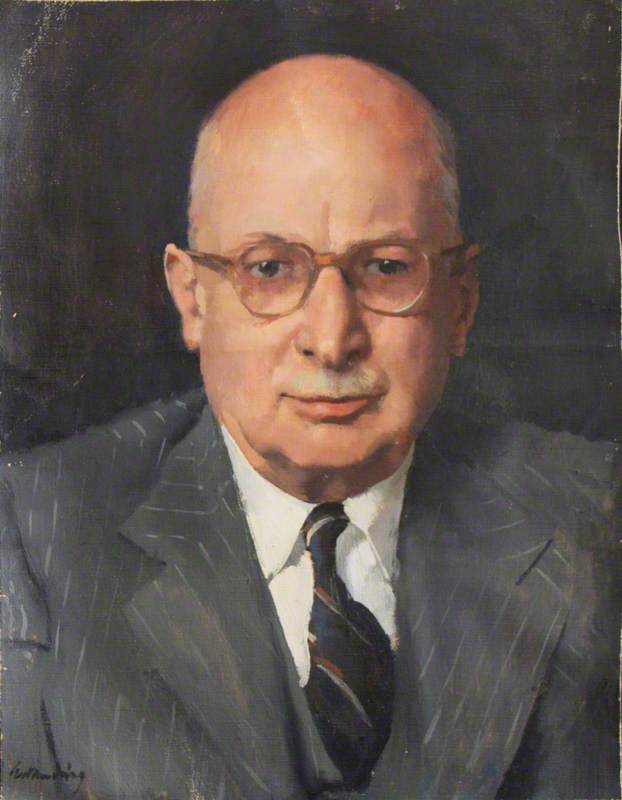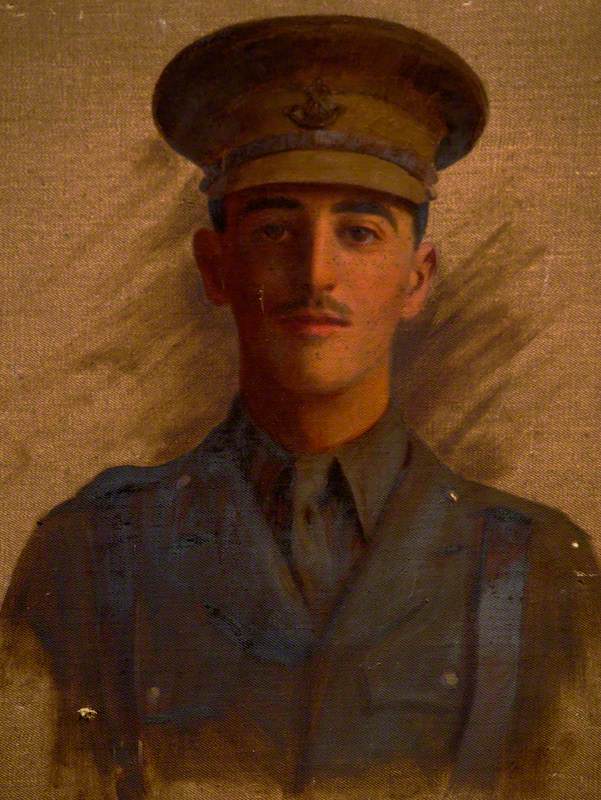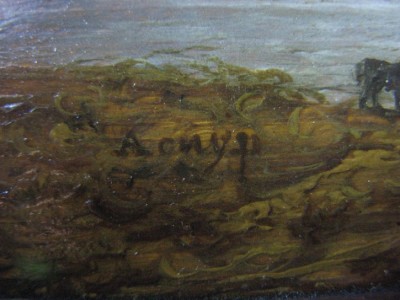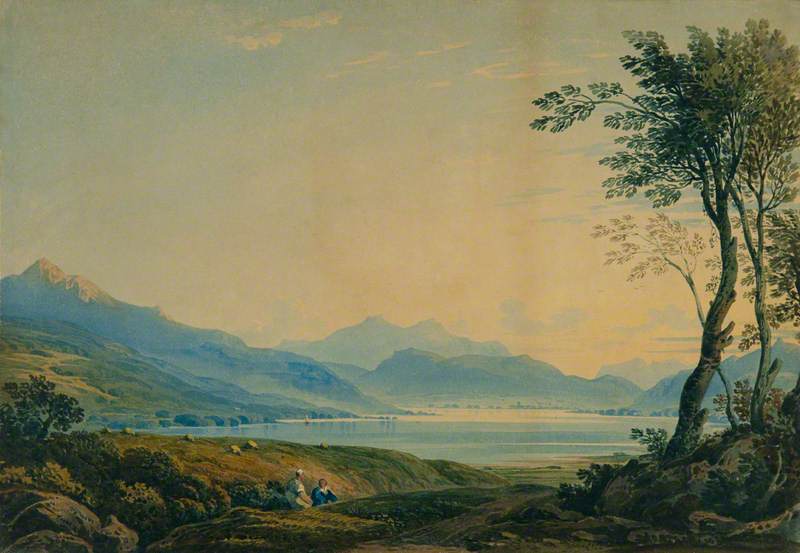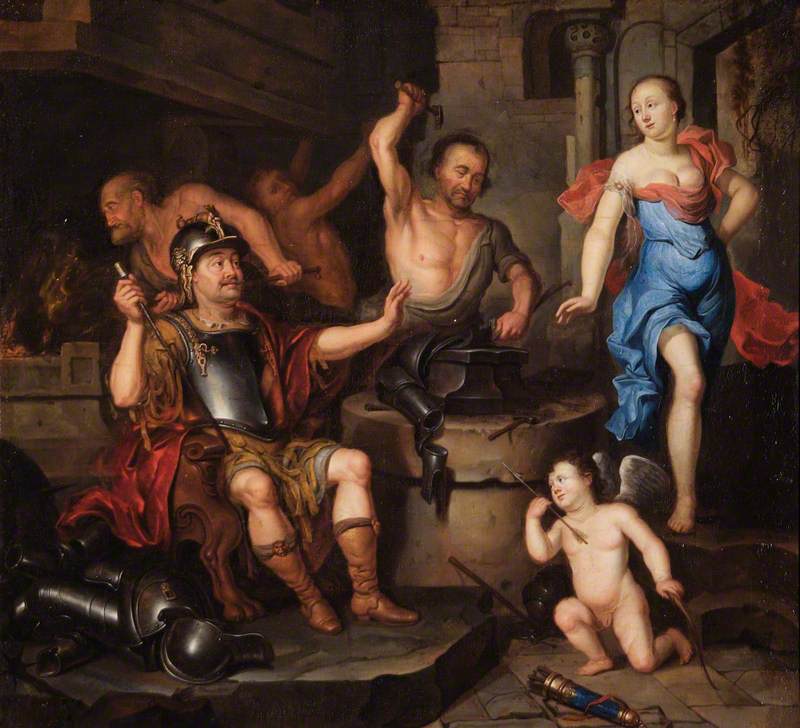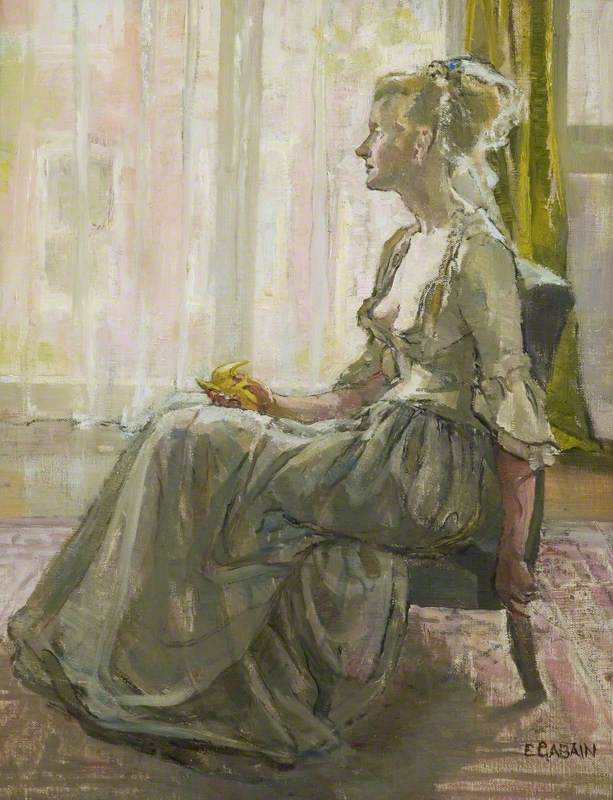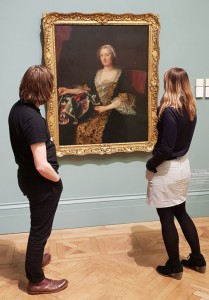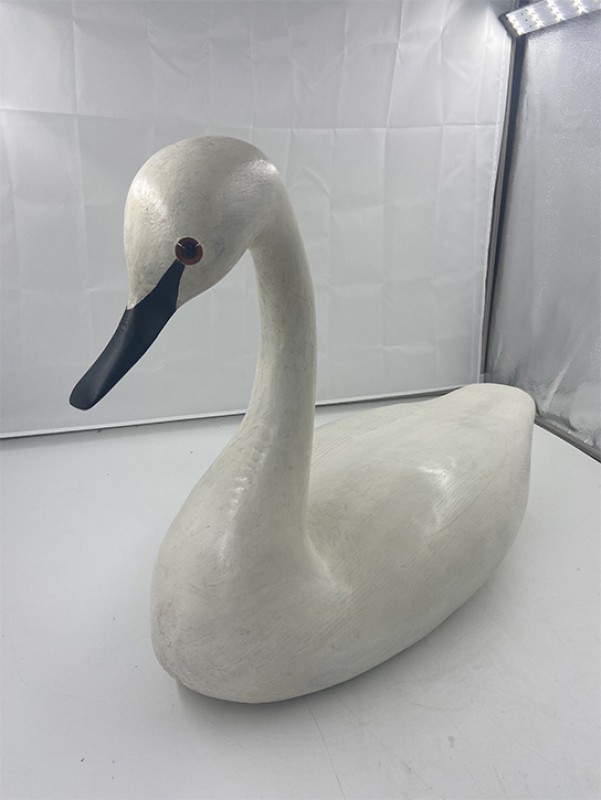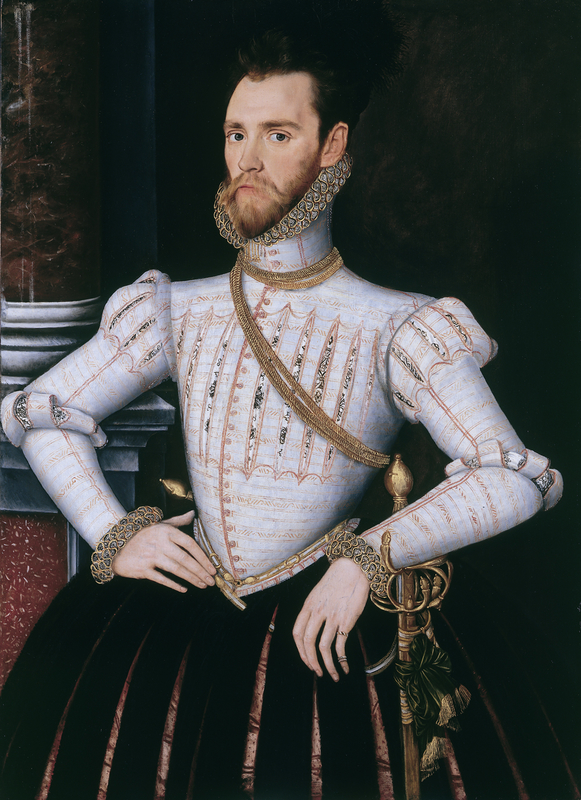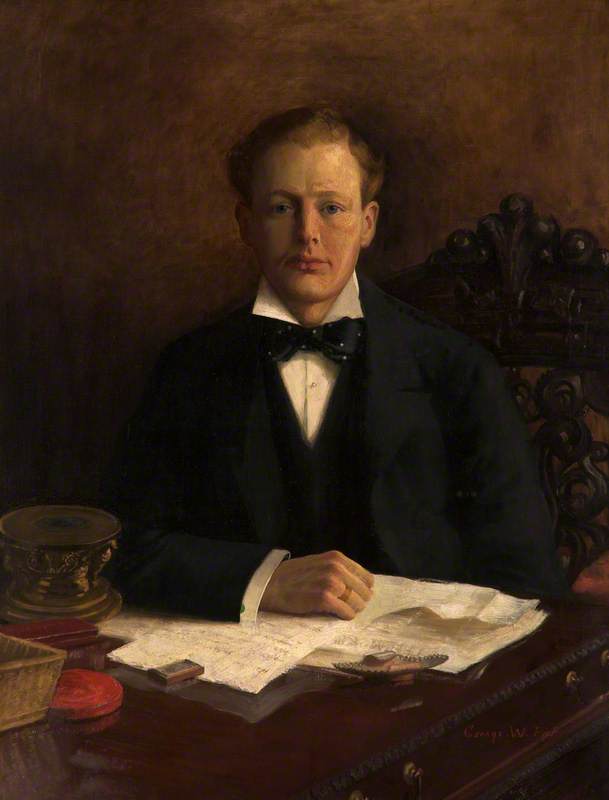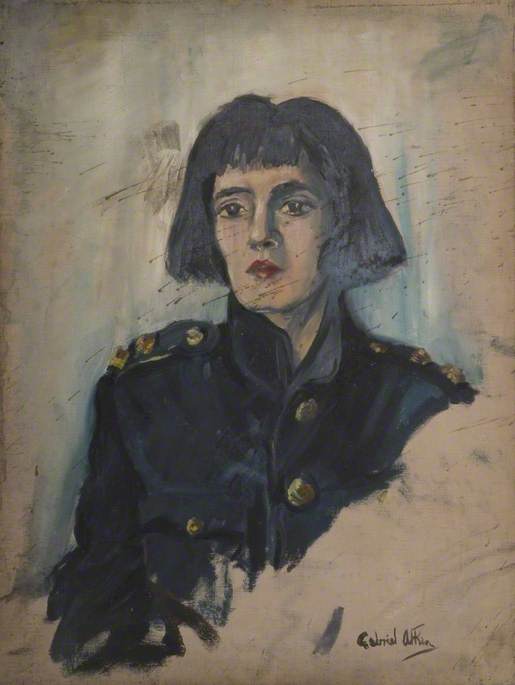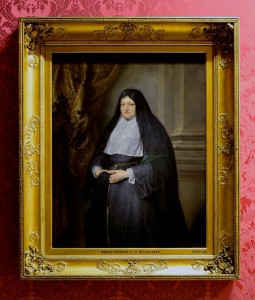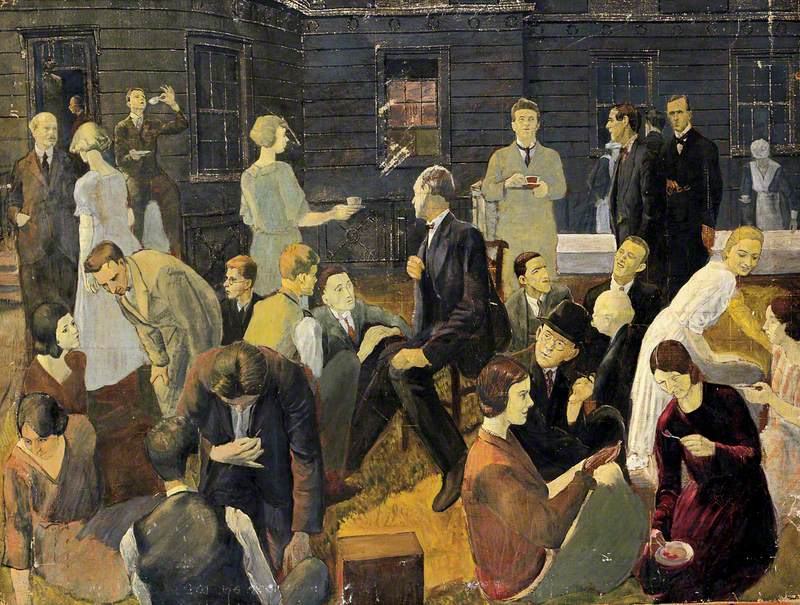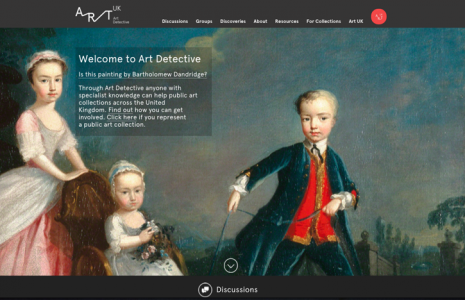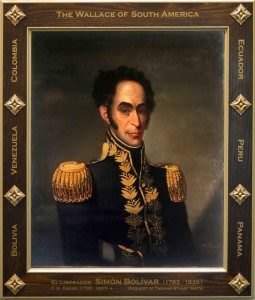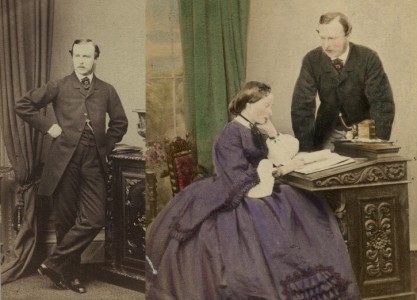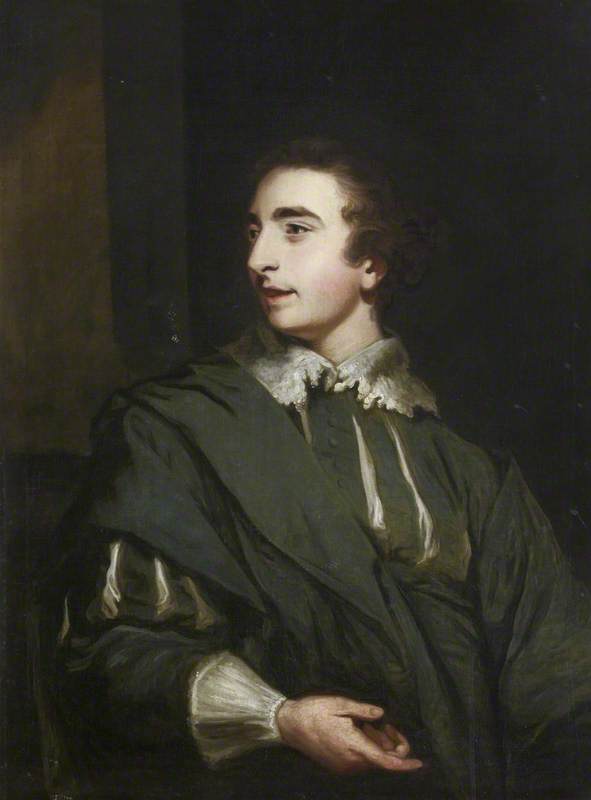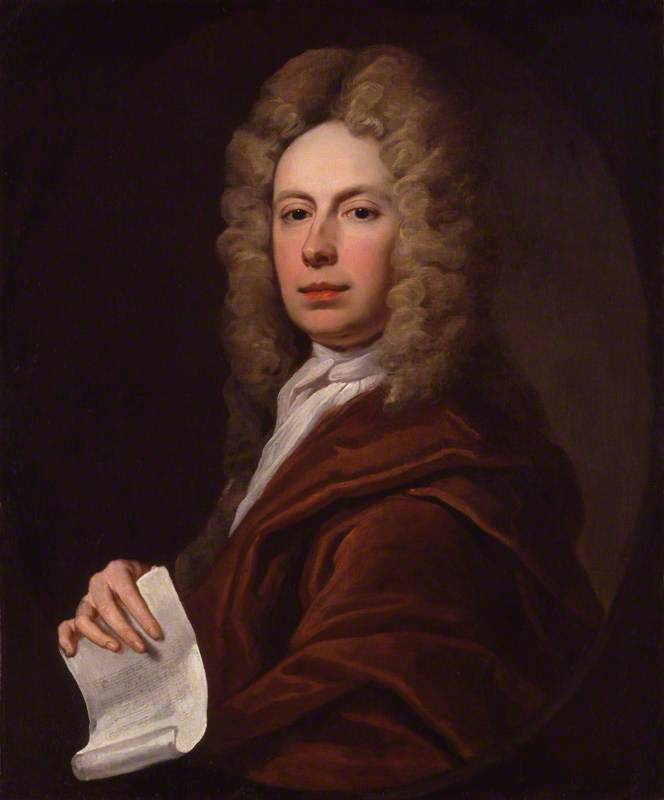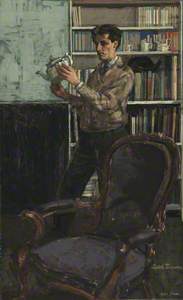The handsome blue and white teapot clinches it, held as fondly now as when it was painted in the hands of 'A Collector' more than half a century ago. Robert Brown is both the artist and the collector, whose identity was tracked for months by Art Detectives ingeniously chasing clues, including the shape of his ear lobe, the Coronation mug, and the Penguin Classics books on the bookshelf.
'I can't remember now where I bought it, but I wouldn't have paid more than a few bob for it in a junk shop,' Brown said, turning the still immaculate teapot into the light. 'You could pick up nice Victorian pieces very cheaply then, they were very much out of fashion and nobody wanted them. I still have the chair too, it had to be re-covered but it's still in very good nick.'
The painting was photographed and catalogued in the collection of the Royal Watercolour Society, but between archivists and with their records in store, the society knew no more than the title, and the signature 'Robt. Brown'.
There were many wrong turns in the search for the identity of either the sitter or the artist, including the suggestion that it could represent a privileged young man standing in his Harrow school study. It didn't help at all when it emerged that there were at least two artists of roughly the same name, roughly the same age, born, living and working in roughly the same area of London, and both exhibiting in the same Royal Academy summer show in the 1950s.
Brown was hiding in plain sight throughout the hunt, quite unaware that he was missing in action because he doesn't engage in social media – his artist wife Ann Hulland does the emails. Most of the detectives assumed that both the subject and the creator of the painting, now in the collection of the Royal Watercolour Society and thought to have been made in the 1950s or even earlier, must be long dead – but at 91, Brown is very much alive.
Artist Robert Brown and his teapot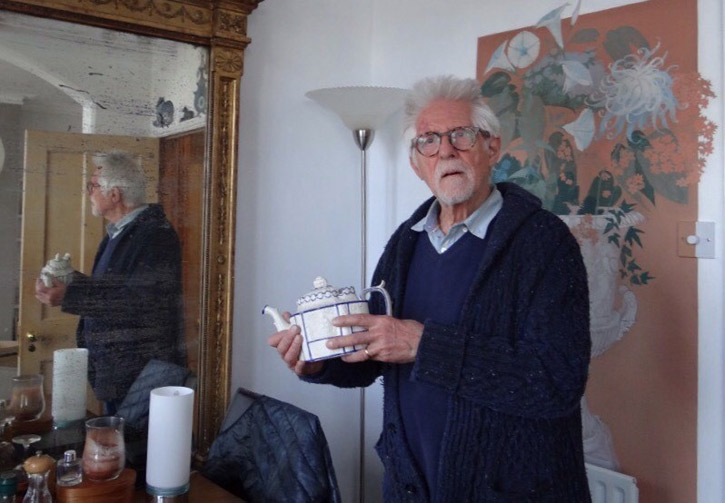
He prefers to paint in bright daylight these days, but he is still a working artist, a half-completed commissioned portrait of a local man on his easel. He still lives and works on the banks of the Thames near Hampton Court Palace, in a pretty narrow Victorian house now surrounded by millionaires but which he was able to buy in the early 1960s on a junior lecturer's salary at Kingston's art college: a thing inconceivable to any young artist now. The house is full of evidence of his collecting, including an enormous battered gilt mirror, the epitome of shabby chic, which he found decaying in a second-hand car yard, and which now fills an entire wall of the dining alcove in his living room, under his own frescoed palm leaf ceiling.
The teapot featured in the 1950s painting
The detectives were first onto the delightful teapot decorated with relief classical figures and garlands, correctly identifying it as a nineteenth-century feldspathic stoneware pot made by Castleford in Yorkshire. However, it threw them onto the wrong scent entirely, leading to several proposed ceramics collectors or experts.
The suggested subjects included Reginald George Haggar, born in Ipswich in 1905, a florist's errand boy before he became an accomplished artist, art director at the Minton works, and later a teacher and author on ceramics. Another was the ceramics historian and collector Geoffrey Godden, until the art historian Betty Elzea, who had known Godden well during her time at the V&A in the 1950s and 1960s, said it was definitely not him, despite the left earlobe which some detectives thought they recognised. The spotlight turned back on Haggar: 'R. G. Haggar's ear matches much more closely' one observed.
It was Pieter van der Merwe – who described the subject as 'a serious-minded/artistic man' – who first suggested the painting was probably a self-portrait. Wendy Howard finally tracked Brown to his riverside home, and Osmund Bullock made the phone call, speaking first to Ann Hulland, and then, to his astonishment, to Brown himself. Now silver-bearded and white-haired, and wearing a hearing aid, Brown is astoundingly youthful in appearance and manner, and perfectly recognisable as the 'Collector'.
Robert Brown recreating the pose of his self portrait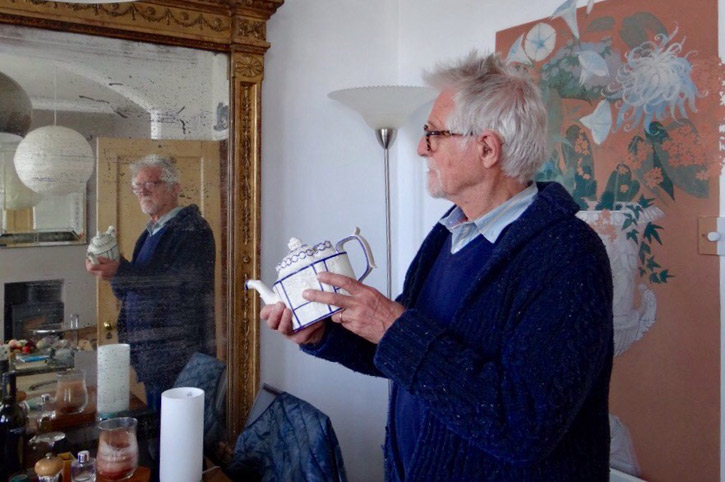
He was highly amused at the hunt, particularly the suggestion that he could have been a Harrow man. He was born in Ruislip in Middlesex in 1927, but his whole family was evacuated with his civil servant father to Liverpool, where he went to school before art college in Blackpool. His disappearance from records in London, and the gap which so puzzled the detectives, was because although he did so well that he won a scholarship to the Royal College of Art, he had to postpone it for National Service, and so joined the navy. Many recall similar periods of their lives with horror, but Brown remembers with incredulous joy the tours of duty which took him and a small sketchbook from the grey of post-war Britain to the blazing light of the East and South America – 'anywhere we needed to show the flag, basically'. His mother saved all the letters he wrote home every week: 'I don't know what they made of them, I really was living in another world, there they were enduring one of the hardest winters on record, still with rationing, and there was I, in the sunshine of the West Indies.'
Back in the grime of London, he loved his time at the RCA – 'the world was kinder then to students' – particularly working with his professor on medieval frescoes in Winchester Cathedral: 'There was something amazing about being so high up in the roof, and so close to these lovely things made so long before. It was a privilege.' There is perhaps an echo of his time on the scaffolding in the charming wall and ceiling paintings he has added to his own house.
He worked in book and advertising illustration for a time on graduating, but disliked the hustling for work and the ferocious deadlines. He found what he did love was teaching, first in Rochester and then at Kingston where he met his wife.
Another of the puzzling gaps in the record is because although he greatly enjoys painting, he disliked the pressure and administration of exhibiting. He did put work into some group shows, and the RA summer show, which got him enough attention to be elected to the Royal Watercolour Society – hence his presentation of A Collector – but almost all his work has been on private commissions.
He thinks the setting in A Collector, a room striped with sunlight, is probably his parents' home in Acton in the late 1950s or early '60s, after they returned to London, and he was between cheap bedsits.
'I don't know why I called it A Collector, I was never a serious collector – I bought whatever I could afford when something caught my eye. I just thought it would be nice to make the painting surrounded by all the things I liked.'
'It's very nice to see it again after all these years,' Brown said, smiling at his younger self. 'I never had a photograph of it, so I haven't seen this in a very long time.'
Maev Kennedy, writer

